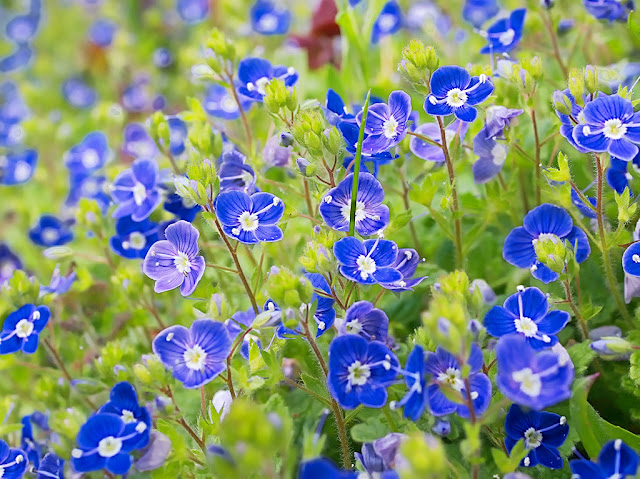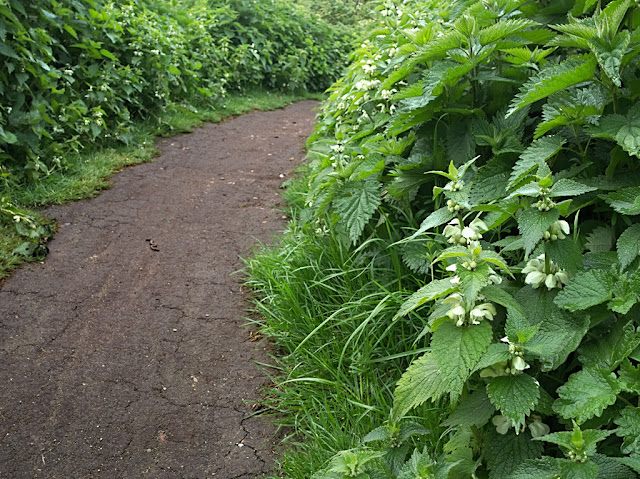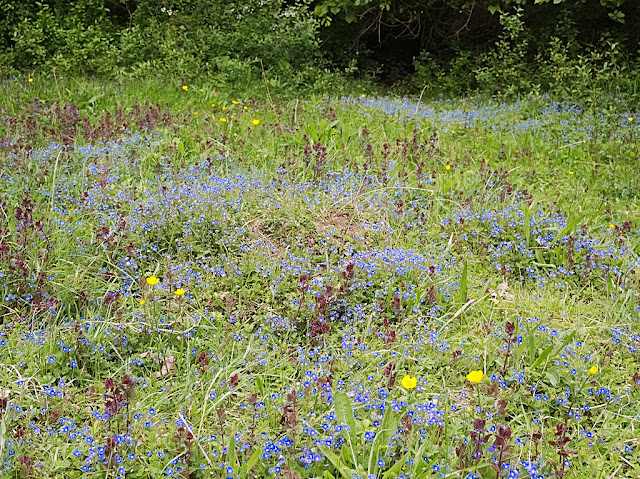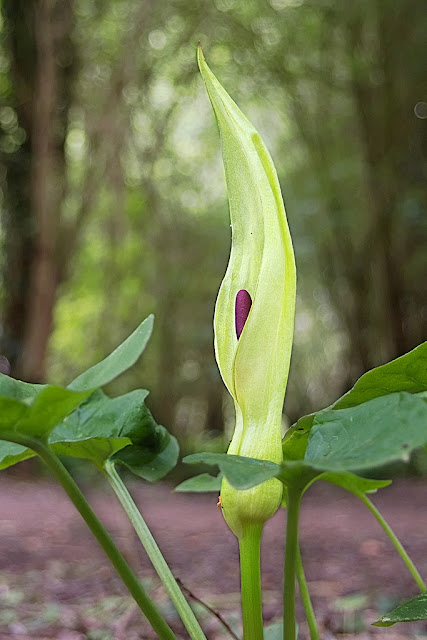 |
| Dandelion - 25 April 2017 Though dandelions are abundant outside of Milton Country Park inside there are only a few clumps growing on the edge of paths. |
The dandelion - the name is from the old French dents-de-lion referring to the leaves whose shape resembles lions' teeth - has a reputation as something of an oracle. The flowers can be used to foretell everything from a child's future wealth to the true status of a woman's love, as well as forecasting the next day's weather. The seed heads are equally potent: blowing on the seed head can yield such diverse information as the time of day, the number of children a child will have, and the state of the blower's love life.
Germander Speedwell
 |
| Germander Speedwell - 25 April 2017 Close up the resemblance of the flower to birds' eyes is obvious Its alternative name is birds-eye trefoil |
If the dandelion flower is for the picking, my next flower, germander speedwell, definitely is not. To pick one of its tiny blue flowers was to risk having a bird peck one's eyes out; a belief presumably based on the resemblance of the flower with its dark blue periphery and white centre to a bird's eye. Except in Ireland, where it was sewn into clothes to protect against accidents!
In any case, the name 'germander speedwell' suggests happier assocations: 'speedwell' - a flower to speed the traveller on her way, cheered on by its masses of bright blue flowers.
Cuckoo Pint
The cuckoo pint (rhymes with mint, and is short for pintle a name for the penis) is the dirty postcard of the plant kingdom. The resemblance of its flowers, with their poker shaped spadix partially enclosed in a pale green hood or spathe, to human genitalia has titillated the imagination of generations. As a result, it has been called over 150 names including lords and ladies, devils and angels, boys and girls, naked boys, naked girls, and jack in the pulpit. The starch in its roots was used for stiffening altar clothes, church linen and Elizabethan ruffs.
Comfrey
 |
| Comfrey - 11 May 2017 In the woods in the south of the park, there is a large mass of comfrey growing either side of the path. |
Comfrey is an example of a plant cultivated for its medicinal properties. The name 'comfrey' , derived from the Latin 'con firma' to grow together, and other traditional names such as knitbone and boneset, reflect its value as an aid to the healing of broken bones. It has also been used as a poultice for bruises and to relieve arthritic pain, and a remedy for nappy rash.
White Dead Nettle
 |
| White Dead Nettle - 17 April 2017 Up to this year, there have been just a few clumps of this plant in the park, this year it lines the bike tracks at the south of the park. |
Further Reading
I have listed all my sources for this post on a separate page 'Folklore References'Next: Laburnum


No comments:
Post a Comment